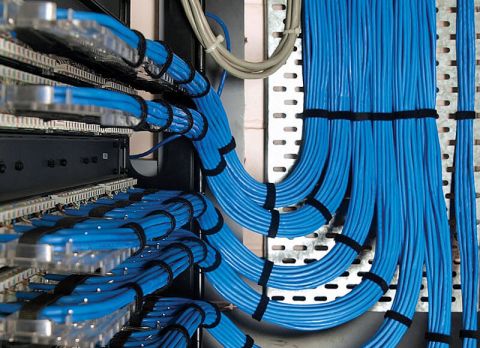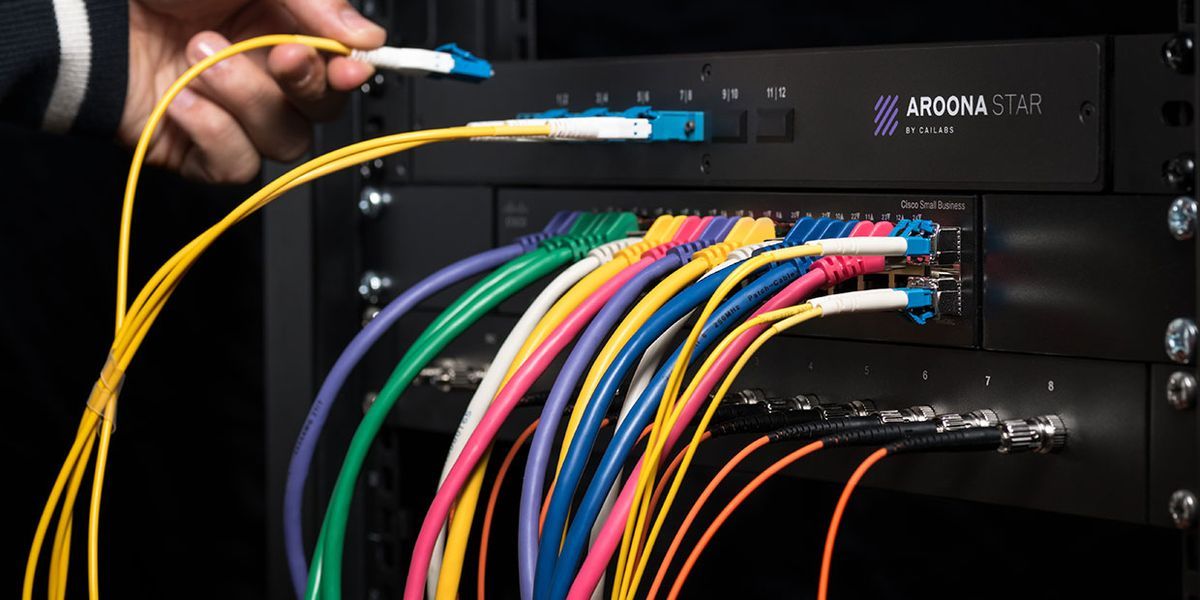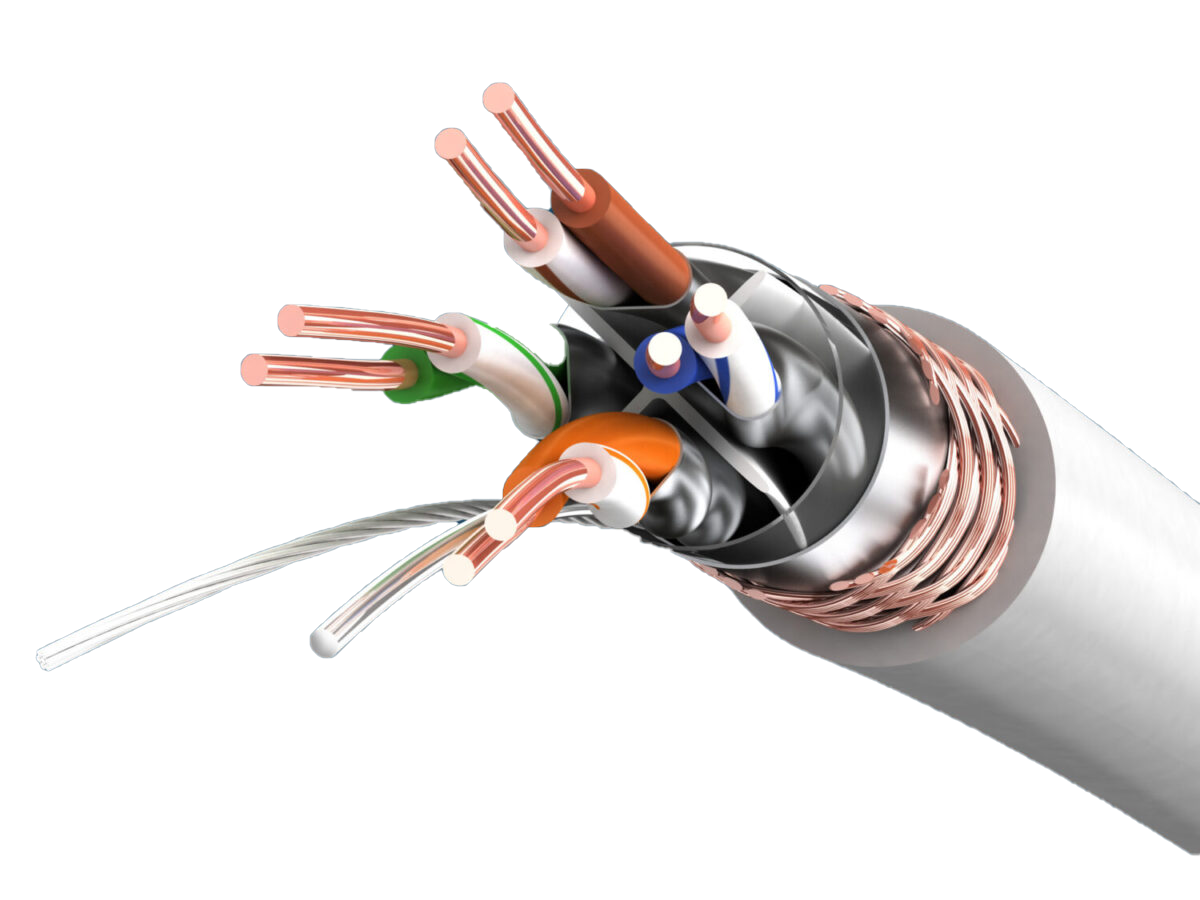Structured Data Networks
Standardized and organized communication system using various categories of Ethernet cables. Includes centralized network hubs, unified connectivity with standardized connectors, and flexibility for future scalability. Provide efficient and reliable connectivity for voice, data, video, and other applications.
Secure Your Business
with Advanced
Network Solutions

What Is Structured Data Cabling?
Structured data cabling is the organized and efficient way to wire your building or office. It enables easy integration of new devices and ensures seamless connectivity with existing IT equipment, future-proofing your network. Say goodbye to tangled cables and welcome a hassle-free, high-performance network.
Faster data transfer speeds and reduced downtime – Implementing structured data networks can increase your business’s productivity by up to 50%
Secure Network Design
We cover everything you need, including surveys, design, project management, installation, and maintenance of data cabling networks. With over 10 years of experience, we have a proven track record of delivering successful projects for clients of all sizes and complexities. Our expert team specializes in data and voice structured cabling, handling CAT5e, CAT6, and CAT6a installations. You can trust us to provide reliable and efficient solutions for your cabling needs.


Types of Structured Data Cabling
Implementing structured data cabling with Cat5e, Cat6, and Cat6a cables offers standardized network architecture and faster data transmission speeds. Cat6a cables can support speeds of up to 10 Gbps at a bandwidth of 500 MHz, doubling the capacity of Cat6. Although the latest technology comes at a higher price, the RJ-45 connectors used in these patch cables ensure backward compatibility, allowing seamless connections with any category of network cable. Upgrade to structured data cabling for improved network performance and efficiency.
Top 4 Reasons for Choosing Structured Data Cabling
Saves time and money with a one-time investment
You’ll no longer depend on costly network engineers to add new team members or devices, upgrade IT equipment, or troubleshoot network performance issues. With structured cabling, problems are easier and cheaper to fix compared to conventionally wired offices. Enjoy cost-effective efficiency and peace of mind with our structured cabling solutions.
Enhanced Network Performance
Optimizes data flow and reduces signal interference, leading to improved network performance. Enjoy faster data transfer rates and seamless communication between devices, boosting overall productivity and user experience. With our structured cabling solutions, your network will operate at its full potential, supporting your business needs efficiently.
Enables scalable growth and adaptation to future technology advances
Providing a competitive edge. As bandwidth demands increase due to activities like video streaming and the internet of things, a robust network infrastructure becomes essential for handling growing data demands. Stay ahead in the dynamic business landscape with our structured data network architecture.
Reduces downtime significantly, saving your business from costly disruptions.
Downtime due to network issues directly impacts productivity and incurs expenses. With our structured network installations, you can expect minimal downtime compared to offices with ad-hoc network setups. Ensure seamless operations and cost-effectiveness with our reliable cabling solutions.
Frequently Asked
Questions
Network security is vital because it protects your sensitive information, customer data, and intellectual property from cyber threats. It safeguards your business from financial losses, reputational damage, and potential legal consequences.
The cabling used in your network does matter significantly, even if you have fast data cabling. The network’s overall speed is limited by the slowest devices connected to it. Therefore, investing in the right cabling is essential for future-proofing your network and ensuring it can handle any device speed.
When installing a new network, consider the current and future needs of your business, including the number of workstations, data volume, cable run length, and budget.
For data cable choices, copper cables (Cat 5e and Cat 6) offer up to one gigabit and 10 gigabits speeds, respectively, and are suitable for most smaller offices. Copper cables are cost-effective and work well in most environments, except for those subject to electrical interference.
On the other hand, fibre optic cables provide much faster speeds, cover greater distances (up to 2000 meters), and are more secure. However, fibre is more challenging to install and more expensive than copper.
When making a decision, consider factors such as speed, distance, cost, interference, security, and quality of the cabling. Plan for future data demands and invest in cabling that can handle it to avoid costly and troublesome replacements in the future.
Ensure proper installation and testing of the chosen cabling standard to meet industry standards and achieve optimal network performance. Investing in high-quality cabling ensures a reliable and efficient network infrastructure for your business.
Structured cabling surpasses conventional wiring systems in several ways. In a conventional setup, tangled wires and cables run haphazardly from devices to routers and printers, installed as-needed over time.
In contrast, structured data cabling takes a logical and long-term approach. It organizes cabling cleanly within a network of routers, switches, and hubs, simplifying installation and troubleshooting for all network devices.
Benefits of Structured Cabling:
-
Future-Proofing: Scalable and adaptable, structured cabling enables robust business infrastructure growth.
-
Reduced Installation Time: The organized setup allows for quick and easy changes and upgrades.
-
Embracing IoT: As the Internet of Things (IoT) gains prominence, structured cabling accommodates the surge of IoT devices efficiently.
-
Simple Upgrading: Modern modular design facilitates easy replacements and upgrades without rewiring.
-
Simplified Problem Diagnosis: Unified and modular structure enables fast problem diagnosis, unlike conventional setups.
The importance of structured cabling is evident as more devices require internet connections, and businesses adopt VoIP phone systems and video conferencing. Traditional wiring may hinder productivity due to poor planning, lengthy cables, and reduced network efficiency. In contrast, structured cabling provides a neater, efficient, and reliable network environment for businesses.
We prioritize business continuity by implementing robust disaster recovery and backup solutions. Our team conducts regular data backups and devises contingency plans to minimize downtime during unforeseen events, allowing your business to resume operations swiftly.
Copper network cabling standards operate based on different categories, referred to as ‘Cat’ cables. These categories determine the cable’s capabilities and performance levels. Here’s an overview of the main copper data cabling standards:
-
Cat 3: The oldest standard used in the 1990s, supporting speeds up to 10 Mbps.
-
Cat 4: Offered higher speeds up to 20 MHz but was quickly overtaken by Cat 5.
-
Cat 5 (100BASE-T): Enhanced to four pairs of cables, handling up to 100 MHz and capable of speeds up to 100 Mbps.
-
Cat 5e (1000BASE-T): Replaced Cat 5, supports Gigabit Ethernet traffic and Power over Ethernet applications.
-
Cat 6: Provides better data cross-talk prevention and can handle transmissions up to 250 MHz (1000BASE-TX) but has a maximum length of 55 meters.
-
Cat 6a (augmented Cat 6): Can handle 500 MHz, providing 10GBASE-T and increasing the maximum distance to 100 meters.
-
Cat 7: Allows frequencies up to 600 MHz over 100 meters, supporting Ethernet speeds up to 10 Gbps.
-
Cat 8: The newest standard, capable of operating at 2000 MHz, but over shorter distances (36 meters), primarily used in data centers.
Shielding is another consideration; most cables are unshielded twisted pair (UTP), while shielded twisted pair (STP) is preferred in electrically noisy environments.
Structured cabling follows a standardized layout, enabling easy rearrangement and patching into network switches, providing flexibility and efficiency.
Voice and data cabling form the backbone of an office or campus network, capable of handling voice and data communication. It includes various types of cabling such as phone system cabling, data network cabling, coax cabling, server room cabling, surveillance camera wiring, video cabling, and wireless network infrastructure cabling. Key cabling standards include Cat5e, Cat6, Cat6a, and Cat7.
Importance of Voice and Data Cabling:
-
Future-Proofing: Proper planning and choosing high-quality cabling ensure the network can adapt and expand with future technology, enabling business growth.
-
Regular Testing: Regular testing of the cabling is crucial to ensure optimal network performance. Certified and experienced engineers should conduct tests.
-
Avoiding Cutting Corners: Opting for high-quality components ensures network functionality, prevents downtime, and maximizes the lifetime of the network.
-
Meeting Communication Needs: Robust and fast voice and data cabling support various communication technologies, such as conference calls, video chat, and VoIP, ensuring reliable and high-bandwidth connections.
-
Business Impact: Investing in proper voice and data cabling helps businesses avoid costly problems in the future and ensures the availability of IT infrastructure, directly impacting the bottom line.
By understanding the importance of voice and data cabling and making informed decisions, businesses can create a reliable and efficient network infrastructure for their communication needs.
Wired connections are faster and more reliable than Wi-Fi, making structured cabling a crucial consideration for businesses. The right data cables can meet increasing bandwidth demands and serve the business for years to come.
Here’s a brief guide to the main cabling standards:
-
Category 5 (CAT5): Introduced in 1995, offers 10/100 Mbps speed at up to 100 MHz bandwidth.
-
Enhanced Category 5 (CAT5e): Introduced in 2001, supports up to 1 Gbps speed at up to 55 meters and adheres to stringent testing standards to reduce crosstalk.
-
Category 6 (CAT6): Introduced in 2002, supports Gigabit Ethernet and up to 250 MHz bandwidth over 55 meters with added shielding for reduced crosstalk.
-
Augmented Category 6 (CAT6a): Introduced in 2008, supports 10 Gbps at 500 MHz over 100 meters, suited for industrial environments.
-
Category 7 (CAT7): Unveiled in 2010, allows 10-gigabit speeds over 100 meters and offers 600 MHz bandwidth with added shielding for reduced crosstalk.
Considering the difficulty in working with CAT7, it is best suited for large enterprise networks and data centers.
Choosing the right cabling standard is essential to future-proof the network for business demands. Opting for the best possible cabling standard today ensures a reliable and efficient network for tomorrow’s needs. STL can help determine the ideal cabling standard for your business network. Contact us for expert advice.
Our network solutions are tailored to cater to businesses of all sizes and industries. Whether you’re a small start-up or an established enterprise, our expertise in scalable network design ensures the perfect fit for your specific requirements.
Didn’t find the answer to your question?
Contact us for more information.
Before proceeding with a structured data cabling installation, consider the following
Engage Key Stakeholders
Consult stakeholders from various departments to understand their commercial needs and how technology can support them in the short, medium, and long term. Identify required applications, such as data, voice, video, and multimedia, to design a system that meets future business needs.
Plan Your Layout
We will assist in planning network point locations, including desks and communal areas serving as Wi-Fi hotspots. Determine the number of network ports needed at each location and map out installation equipment space, including server room rack requirements and network equipment routes throughout the building. Consider the distance the cabling will travel to determine suitable cable specifications, which may vary based on requirements.
Choose a Reliable Cabling Company
A well-executed structured cabling installation is vital for smooth technology usage on your network. Rely on STL’s expertise with over 10 years of experience in specialized structured cabling installations. Contact our experts for all your structured cabling needs.


